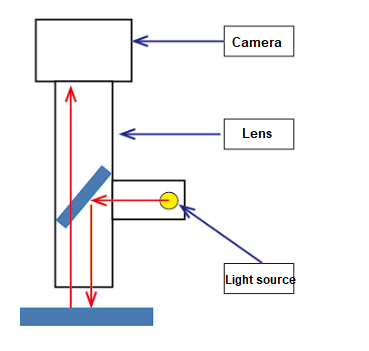Coaxial light is primarily utilized for observing “glossy” and “flat” surfaces; however, due to the alignment of the light source with the observation axis, it can also be used for observing the bottoms of holes.

However, due to the characteristics of coaxial light, it is necessary for the bottom of the hole to be flat and glossy.
Additionally, if the hole diameter is wide and the depth to the bottom of the hole is short, it may be possible to observe it using ring light.
(Example 1) φ3.5mm, depth 8mm
While there is gloss, the bottom of the hole is tapered.

|
<Observation using coaxial light>
|
<Observation using ring light>
|
* Since the bottom of the hole is tapered, it is believed that ring light would facilitate easier observation.
(Example 2) φ6.5mm, depth 20mm
The die-cast surface does not possess significant gloss.
The bottom of the hole is flat.

|
<Observation using coaxial light> |
<Observation using ring light>
|
* The bottom of the hole is flat, but lacking gloss, making ring light more suitable than coaxial light.
(Example 3) φ3.5mm, depth 40mm
The bottom of the hole is flat and glossy.

|
<Observation using coaxial light>
|
<Observation using ring light>
|
* Due to the depth of the hole, ring light cannot reach the bottom. However, since the bottom is flat and glossy, it is possible to observe it using coaxial light.









